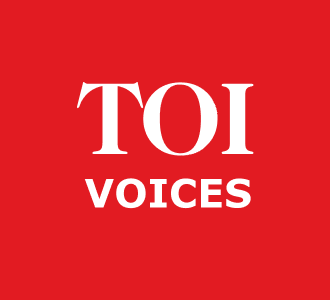Business
Indian Financial System Fails to Support the Savings Class

The Indian financial framework, which predominantly affects ordinary taxpayers—often referred to as the “savings class”—is under scrutiny for its inadequacies. This system is largely governed by three entities: the Reserve Bank of India (RBI), the Insurance Development and Regulatory Authority of India (IRDAI), and the government revenue authorities overseeing both direct and indirect taxation. While there is considerable focus on creating a favorable environment for large businesses, the same cannot be said for the everyday individual’s financial well-being.
IRDAI and Insurance Market Challenges
The IRDAI is tasked with regulating the insurance sector. However, the organization has concentrated its efforts on enhancing the profitability of insurance companies, often at the expense of policyholder welfare. The lack of inflation protection in pension plans exemplifies this issue. For instance, pension payments received in the first year lose value over time due to inflation, diminishing the purchasing power of retirees.
Currently, there are minimal safeguards in place to protect pension policyholders from inflation-related losses. As a result, the insurance market remains one of the least developed among major economies, leaving many individuals vulnerable.
RBI’s Role in Banking Stability
As the primary banking regulator, the RBI is responsible for ensuring the stability and liquidity of banks. While it has made strides in safeguarding the banking sector from instability, challenges remain, particularly concerning cooperative banks. Sudden restrictions on withdrawal limits can undermine public confidence.
Furthermore, the Deposit Insurance and Credit Guarantee Corporation (DICGC) currently insures deposits only up to ₹500,000 per depositor, per bank. This coverage is insufficient for many individuals, particularly retirees who often hold larger sums in fixed deposits. Such limitations leave considerable amounts of money uninsured, raising concerns about the security of personal savings.
Moreover, the RBI has been criticized for its inconsistent approach to interest rates. While it quickly adjusts rates for corporate borrowers, it does not apply the same urgency to increase rates offered to depositors. This disparity contributes to stagnating bank deposits, as individuals feel undervalued and taken for granted.
Taxation Issues: Direct and Indirect
The financial burden on the savings class is exacerbated by the taxation system. Direct taxes imposed on interest and dividends from post-tax savings create a scenario where individuals are effectively taxed multiple times on their income. This system undermines the principle that surplus income generated from already taxed money should not be taxed again.
Statements from the Finance Ministry indicate a desire to reduce the scope of E-E-E (exempt – exempt – exempt) transactions regarding investments in Provident Funds and Public Provident Funds. However, such measures do not address the double taxation faced by the savings class, leading to reduced savings and increased consumption over time.
In terms of indirect taxation, the burden of Goods and Services Tax (GST) falls primarily on consumers, particularly in Business to Consumer (B2C) transactions. Unlike Business to Business (B2B) transactions, where input tax credits are available, individual consumers do not have similar provisions. This discrepancy places additional financial pressure on those who are already contributing to government revenue through income taxes.
The Finance Ministry should consider how to incentivize the savings class, as the current structure appears to work against their interests. Without a supportive framework, the long-term implications could hinder national economic growth.
In conclusion, the Indian financial system needs significant reform to better serve the savings class. By prioritizing the welfare of individual taxpayers and addressing the shortcomings in insurance, banking, and taxation, the government can foster a more equitable financial environment that encourages saving and investment. Only then can the financial edifice truly support those who form the backbone of the economy.
-

 World3 months ago
World3 months agoSBI Announces QIP Floor Price at ₹811.05 Per Share
-

 Lifestyle3 months ago
Lifestyle3 months agoCept Unveils ₹3.1 Crore Urban Mobility Plan for Sustainable Growth
-

 Science3 months ago
Science3 months agoNew Blood Group Discovered in South Indian Woman at Rotary Centre
-

 Sports3 months ago
Sports3 months agoBroad Advocates for Bowling Change Ahead of Final Test Against India
-

 World3 months ago
World3 months agoTorrential Rains Cause Flash Flooding in New York and New Jersey
-

 Top Stories3 months ago
Top Stories3 months agoKonkani Cultural Organisation to Host Pearl Jubilee in Abu Dhabi
-

 Science3 months ago
Science3 months agoNothing Headphone 1 Review: A Bold Contender in Audio Design
-

 Sports3 months ago
Sports3 months agoCristian Totti Retires at 19: Pressure of Fame Takes Toll
-

 Top Stories3 months ago
Top Stories3 months agoAir India Crash Investigation Highlights Boeing Fuel Switch Concerns
-

 Business3 months ago
Business3 months agoIndian Stock Market Rebounds: Sensex and Nifty Rise After Four-Day Decline
-

 Politics3 months ago
Politics3 months agoAbandoned Doberman Finds New Home After Journey to Prague
-

 Top Stories3 months ago
Top Stories3 months agoPatna Bank Manager Abhishek Varun Found Dead in Well









